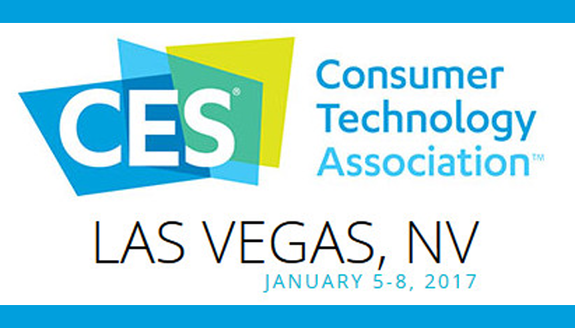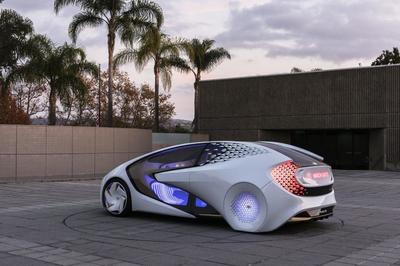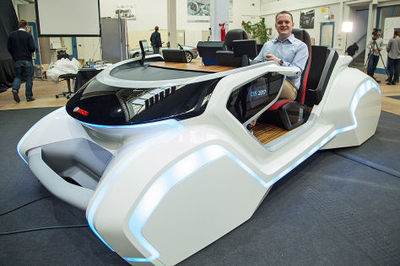|
The Consumer Electronics Show is an annual convention where companies show off their new and upcoming electronics. What was just said, is how it was originally intended, now it's more of a technology show because everything is electronic.
Pulsar's last post was regarding the Internet of Things (IoT), and how big it really is and the affect it has. CES 2017, could really be dubbed the CIoTS 2017 (Consumer Internet of Things Show), because offline technology was the clear minority at the show. From hair brushes to vehicles CES had it all, and along with many others, the hair brushes and vehicles can connect to the Internet. Throughout the 2000s, and much more in this decade, we've been connecting more and more things to the Internet like mass production for World War II. Really, companies are connecting all their products to the Internet now, and there is nothing we're going to be able to do about it. CES 2017 is a picture of what our future will inevitably look like. Smart refrigerators, voice controlled home appliances, internet connected AI controlled cars, virtual and augmented reality, and robots all present at the show. Robots are sort of that sci-fi, always wanted as a kid, type of dream. Yes robots exist in other forms, but not succesfully has a human companion and/or helper, the type invisioned in minds. Well CES 2017 delivered, and Mayfield Robotics unveiled Kuri. Kuri can do many things to make your life a little easier, Kuri is connected to the Internet and can control smart appliances, and notify you of certain things. Kuri can remind you things, monitor your household, and play music. Is Kuri the BETA for a world like Will Smith's iRobot, or a personal droid like R2-D2? Here's a video of Kuri per NBC News:
TV, possibly one of the most rapidly evolved piece of technology in the past 20 years. TV went from big tube TVs, to flat screens, to LCD screens, all the way to Organic LED. CES 2017 delivered new links in the TV evolution chain, and lets start with LG's wallpaper TV. LG used their OLED technology to make a super light weight, super slim TV named Signature OLED TV W. It has a flexible screen, yes flexible, and is only 4 millimeters thick according to futurism.com.
Video by LG of their "wallpaper" TV:
Flexible paper-like screens are the future for newspaper, and quite frankly books. That technology made a presence at CES 2017, not in just LG's TV, but the concept itself was unveiled. Imagine buying a disposable screen everyday for a newspaper, or hitting the book stand with just small screens to choose from. It's just a matter of when, not if.
Pictured on the right is Toyota's new Concept i, and pictured on the left is Bosch's concept car. Both vehicles have similar ideas, let AI control the car and you act more as the passenger than the driver. Toyota uses a personal AI assistant named Yui. Yui learns, adapts, and functions by usings voice command, sensors, and the Internet to successfully drive you to your destination. Yui will also learn about the driver from driving patters all the way to emotion. As of now, you'll have to go to Japan sometime this year to get a chance to drive one.
According to Wired Bosch has a similar idea, but goes about differently. They want the AI and sensors to learn gestures to control the vehicle. Also according to Wired, Bosch is using Ultrahaptics which is touchelss technology. Bosch wants vehicles to be completely touchless, and have the driver/user control and personalize how they want their car to be and drive. These cars are ahead of their mass production time, but 30-50 years from now, these concepts will be reality and available at dealership near you. CES 2017 had so much to offer, you could go on for hours breaking down and explaining everything that was unveiled. What is clear, is that human civilization is on a straight path to a completely connected world. We are already connected through social media, but just wait, until social media is available to you from a voice command away with no physical device in sight. The products and concepts mentioned above, are just the surface of CES 2017, but it was a snapshot of what is coming to our lives. Personal robot droids, AI controlled everything, digital screens that are paper thick and can roll up into your pocket. Picture Microsoft Hololens without the glasses, instead of glasses there are tiny projectors set up around the room, and with a simple voice command the news and weather pop up in the air while your're still in bed. Augmented and virtual reality are still at their baby stages, but in a decade VR and AR will be must have technology. According to CNET, VR and AR had a weak outing at CES 2017 which seems correct because no big news was reported regarding VR and AR at CES this year. Give it 10 years. All these Internet connected devices are going to need plenty of infrastructure and spectrum to operate on, so at the next FCC spectrum auction, expect many companies bidding on spectrum. Also expect those same companies to go out and either acquire infrastructure or build it themselvels, because the Internet will be our daily lives. 5G will help solve that problem in the wireless world, and fiber will solve that problem in the wired world. 5G will have its own day on Pulsar, but it made a presence at CES 2017, Intel unveiled the first ever 5G modem, even though 5G isn't set in stone yet regarding in industry standard. Also according to that digitaltrends.com article, the 5G modem is hoping to achieve data speeds over 5 GB/s. Crazy. Like stated above 5G will have its own day in Pulsar, and that day should come in 2017. CES 2017 unveiled more smart technology than ever before, some concept, some available in stores this year. The one main thing that can be taken away from this convention, is the Internet of Things will be our lives for centuries to come.
0 Comments
Leave a Reply. |
Categories
All
Archives
October 2020
|



